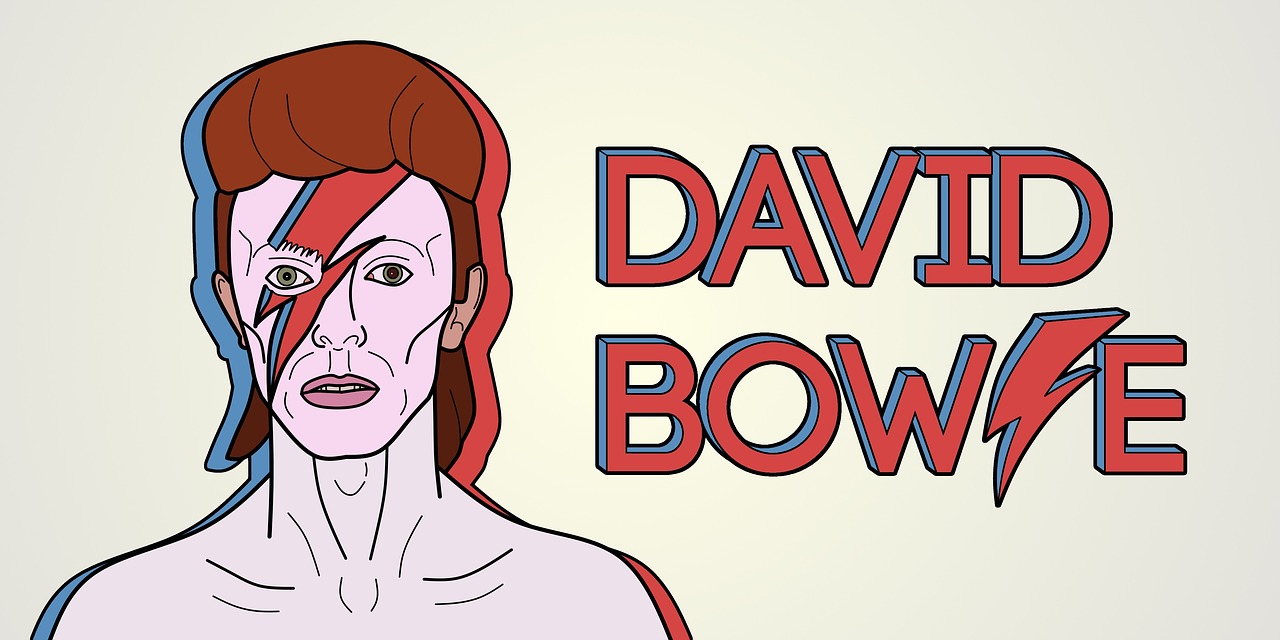David Bowie, the iconic and chameleon-like artist, was renowned for his ability to seamlessly transition between various musical genres throughout his illustrious career. His versatility and willingness to experiment with different styles made him one of the most influential musicians of the 20th century. In this article, we will explore the major music genres that David Bowie explored and mastered during his extraordinary journey in the world of music.
Rock and Roll:
David Bowie’s early musical influences were deeply rooted in rock and roll. His fascination with American rock pioneers like Elvis Presley, Little Richard, and Chuck Berry had a profound impact on his music. Bowie’s early singles and albums, such as “Space Oddity” (1969) and his self-titled debut album “David Bowie” (1967), showcased his affinity for rock and roll, and his charismatic stage presence was already evident.
Folk and Psychedelic Rock:
During the late 1960s and early 1970s, Bowie delved into folk and psychedelic rock, embracing the counterculture movements of the era. Albums like “Space Oddity” and “The Man Who Sold the World” (1970) featured folk and psychedelic elements, with songs like “Memory of a Free Festival” and “All the Madmen” displaying his experimentation with these genres.
Glam Rock:
Perhaps one of the most defining moments in Bowie’s career was the advent of glam rock. His creation of the Ziggy Stardust persona and the release of “The Rise and Fall of Ziggy Stardust and the Spiders from Mars” (1972) catapulted him to international stardom. Glam rock was characterized by its extravagant fashion, theatrical performances, androgynous style, and androgynous style, and bold, anthemic music. Bowie’s Ziggy Stardust era became synonymous with glam rock, with iconic tracks like “Starman” and “Suffragette City” embodying the genre’s spirit.
Soul and R&B:
In the mid-1970s, David Bowie ventured into soul and R&B music, heavily influenced by the American soul sound. His album “Young Americans” (1975) epitomized this genre shift, featuring songs like the title track “Young Americans” and the chart-topping hit “Fame.” Bowie’s rich baritone vocals and the incorporation of funk and soul rhythms marked a significant departure from his glam rock persona.
Funk and Disco:
Bowie’s exploration of funk and disco continued with his 1976 album “Station to Station.” This album marked a transition from soul to a more electronic and funk-oriented sound. The title track, “Station to Station,” and “Golden Years” exemplify Bowie’s foray into these genres. His collaboration with musicians like Carlos Alomar and Luther Vandross contributed to the album’s distinctive sound.
Electronic and Experimental Music:
The late 1970s saw Bowie pushing the boundaries of music even further. Albums like “Low” (1977), “Heroes” (1977), and “Lodger” (1979), collectively known as the “Berlin Trilogy,” showcased his experimentation with electronic and ambient music. Collaborating with Brian Eno, Bowie created innovative and instrumental-driven compositions that challenged conventional song structures.
New Wave and Post-Punk:
Bowie’s influence on the New Wave and post-punk movements of the late ’70s and early ’80s was substantial. His Berlin Trilogy and the subsequent albums “Scary Monsters (And Super Creeps)” (1980) and “Let’s Dance” (1983) incorporated elements of these genres. The track “Ashes to Ashes” from “Scary Monsters” is often considered a pioneering post-punk song.
Pop and Dance Music:
In the 1980s, Bowie embraced pop and dance music, which resulted in his commercially successful album “Let’s Dance” (1983). The title track, “Modern Love,” and “China Girl” showcased his knack for crafting infectious pop hits that dominated the charts during the era. This period solidified Bowie’s status as a global pop icon.
Industrial and Alternative Rock:
Bowie’s willingness to adapt and experiment continued in the 1990s. Albums like “Outside” (1995) and “Earthling” (1997) explored industrial and alternative rock territory. Bowie’s collaboration with artists like Trent Reznor of Nine Inch Nails demonstrated his embrace of the industrial sound.
Experimental and Art Rock:
Bowie’s final albums, “Heathen” (2002), “Reality” (2003), and “The Next Day” (2013), featured a return to more experimental and art rock elements. These albums showcased his enduring creativity and ability to blend various styles into a coherent and innovative sound.
Jazz:
Bowie’s fascination with jazz music was apparent in his 2016 album “Blackstar,” released shortly before his death. This avant-garde jazz-infused album was a departure from his previous work and was met with critical acclaim. It demonstrated Bowie’s unwavering commitment to artistic exploration.
David Bowie’s ability to traverse a wide array of music genres and adapt to evolving musical landscapes is a testament to his status as a musical visionary. From rock and roll to glam rock, soul, funk, disco, electronic, and beyond, Bowie’s career spanned decades of musical experimentation. His impact on the music industry and his ability to inspire subsequent generations of artists showcase his enduring legacy as an artist who fearlessly embraced change and innovation. Bowie’s chameleon-like nature will forever be celebrated as a hallmark of his remarkable musical journey.
